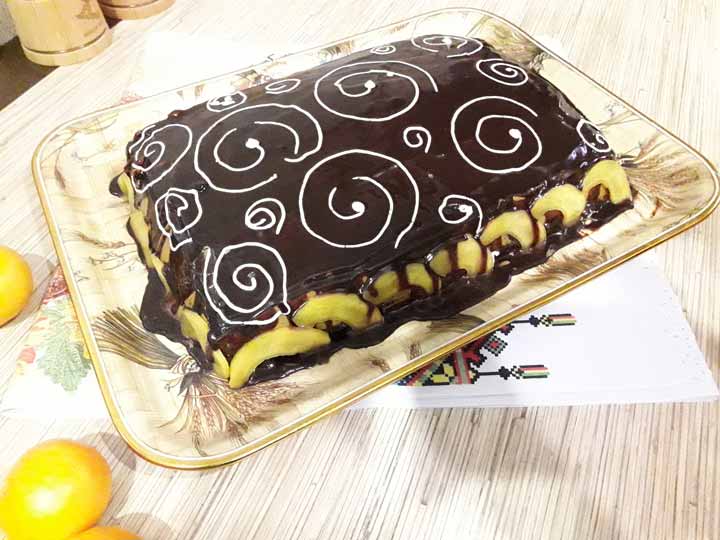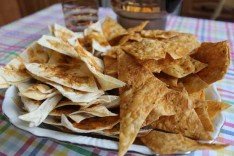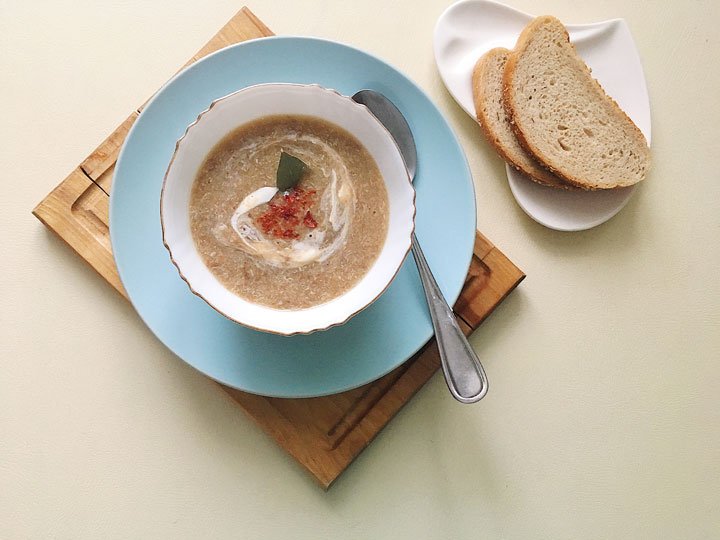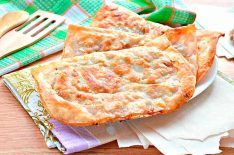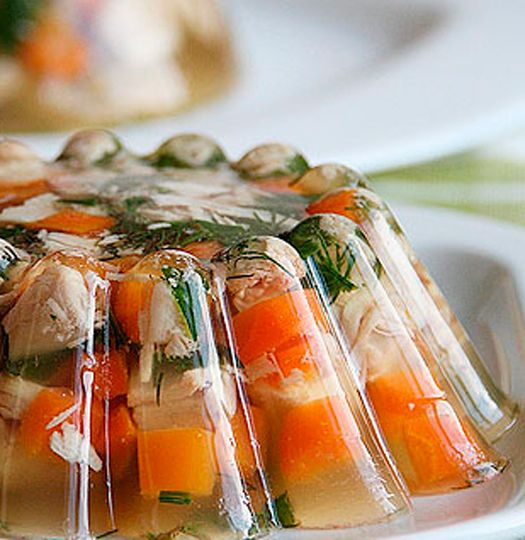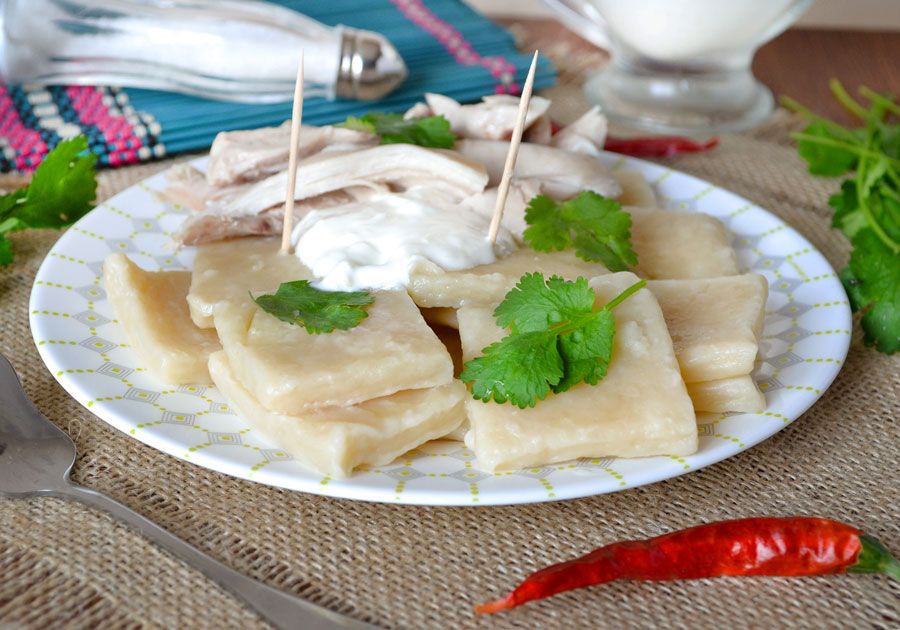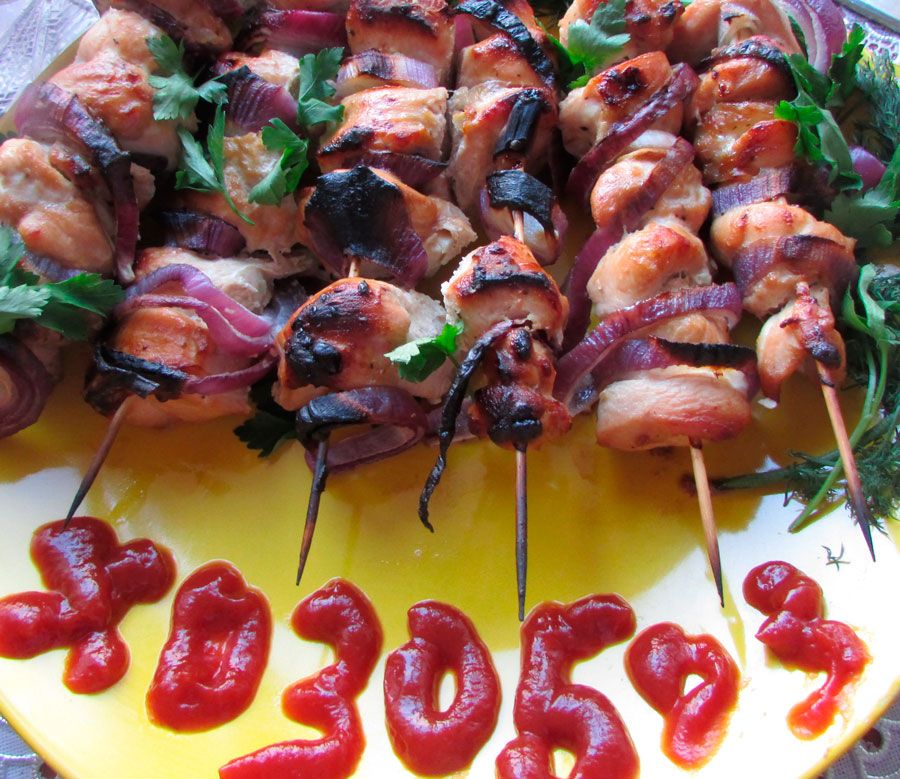Armenian halva
- Nutrition Facts
- Calories: 440
- Protein: 8.9
- Fats: 13.6
- Carbohydrates: 67.5
- Information
- Time: 1 hour 30 mins
- By: Svetla
- Ratings 4
- Your ratings:
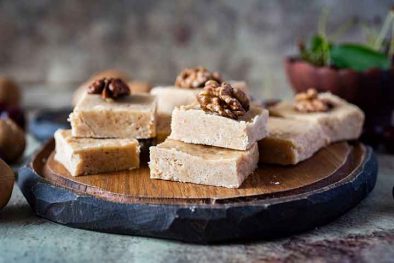
A very interesting version of the dessert will interest culinary experimenters and lovers of oriental cuisine - this is Armenian homemade halva, the recipe is slightly adapted to the conditions of our cuisine, but very close to the original. The important thing is that the process is elementary simple, but the good news is a little overshadowed by the fact that you will have to stand at the stove for more than an hour, vigorously moving the spoon. After all, the Armenian halva, the recipe of which I will post in a couple of seconds, is made from flour, which must be fried, constantly stirring, for quite a long time, adding powdered sugar at the end.
The final sweetness has an incredibly interesting taste and is likely to become a hit on your dessert menu. And the fact that only three very affordable ingredients are used in the recipe adds to all the many advantages and budget.
History of the dish:
It is a well-known and undeniable fact that halvah has Iranian roots, and the very first mention of this sweetness is found already in the 5th century. The story began with the fact that beautiful concubines in the harem were treated to this exquisite delicacy, but the food is extremely high in calories and this was noticed. They began to supply the conquering wars, who contributed to the active dissemination and implementation of the recipe in various cultures with their significant and minor changes. This delicacy often accompanied soldiers on distant campaigns, as it was an abundant source of energy.
In general, halva has two main types: in Dagestan, Armenia and other Caucasian countries, this delicacy is prepared from flour and sweet molasses / honey. In more eastern peoples, already crushed seeds or nuts are taken as the basis for delicacy. For example, in India, in general, the main component of this sweetness is carrots, and despite the unusual combination of products, it is incredibly tasty. The only point is that when vegetables are added to the recipe, the halva itself already very remotely begins to resemble the image we are used to. Such halva is crumbly and superimposed with a spoon. Nevertheless, the Armenian version of this dish keeps its shape perfectly and is cut into neat squares.
It remains only to draw your attention to the fact that on the territory of Armenia, halva began to be prepared around the 11th century, at that time the recipe consisted of flour, water and honey. Then the water was replaced with milk. And our modern recipe already contains powdered sugar instead of honey, which dissolves perfectly in hot flour, being a bonding agent to maintain a stable shape.
Ingredients:
- flour - 300 g
- powdered sugar - 200 g
- butter - 180 g
How to cook
- Prepare the necessary products. Do not replace powdered sugar with sugar.

Preparing the ingredients
- In a deep, repeatedly tested frying pan, melt the entire portion of the oil over low heat on the stove.

Let's melt the butter
- Pour the flour in small batches, mixing in the butter with a spoon until the flour runs out.

Add flour
- Now a very crucial moment: you need to constantly stir the contents of the pan with a spoon / spatula until a noticeable color change, that is, the mass should become a deep creamy shade. It took me 50 minutes to complete this process. In this case, the level of fire can be slightly increased.

Fry the flour
- Now we will add powdered sugar, without ceasing to interfere. We also keep the pan on the stove for 8-10 minutes (of course, we don’t stop stirring) and remove it from the stove.

Add powdered sugar
- We cover any form that is convenient for you with food polyethylene and put the whole mass from the pan on the bottom of the form, forming a compacted layer with an approximate thickness of 3-4 cm. Immediately divide the halva layer into portions with a knife (size optional).

Let's form a layer of halva
- Armenian halva must be completely cooled and then it can be served, garnished with any nuts, for example, walnuts.

Submission of halvah
- Happy tasting!
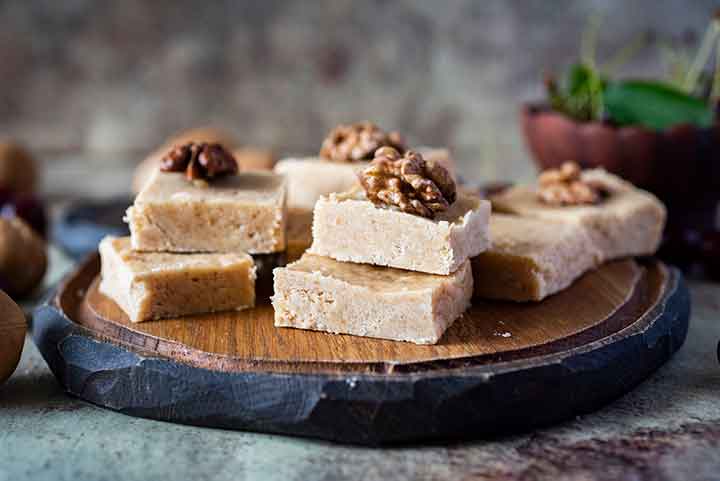
Happy tasting!
Benefits of the dish:
This wonderful delicacy has an exquisite, absolutely not cloying sweetness and an optimally balanced taste. The unique value of this dessert is that having a very worthy taste, halva also has biological value for our body. A large amount of protein will interest physically active connoisseurs of interesting dishes. And the presence of copper, zinc, iron will definitely be useful to a wider mass of consumers. Indeed, in order to qualitatively satisfy light hunger, a very small piece is enough.
A very important characteristic of halvah is the presence of vegetable cholesterol (phytosterol), which by itself displaces harmful cholesterol from the circulatory system. And this wonderful product also contributes to a clear rejuvenating effect, and, of course, charges with an excellent, cheerful mood.
Armenian halva, the recipe for step-by-step instructions we offered you above, combines all the listed advantages and, as you have already seen, the cooking method is so easy that you definitely didn’t need any special “oriental” skills. It remains only to mention that the shelf life of halva is quite long: if stored in the refrigerator, then two months is the maximum available period. It is advisable to place the treat in a glass container, such as a jar or container.





